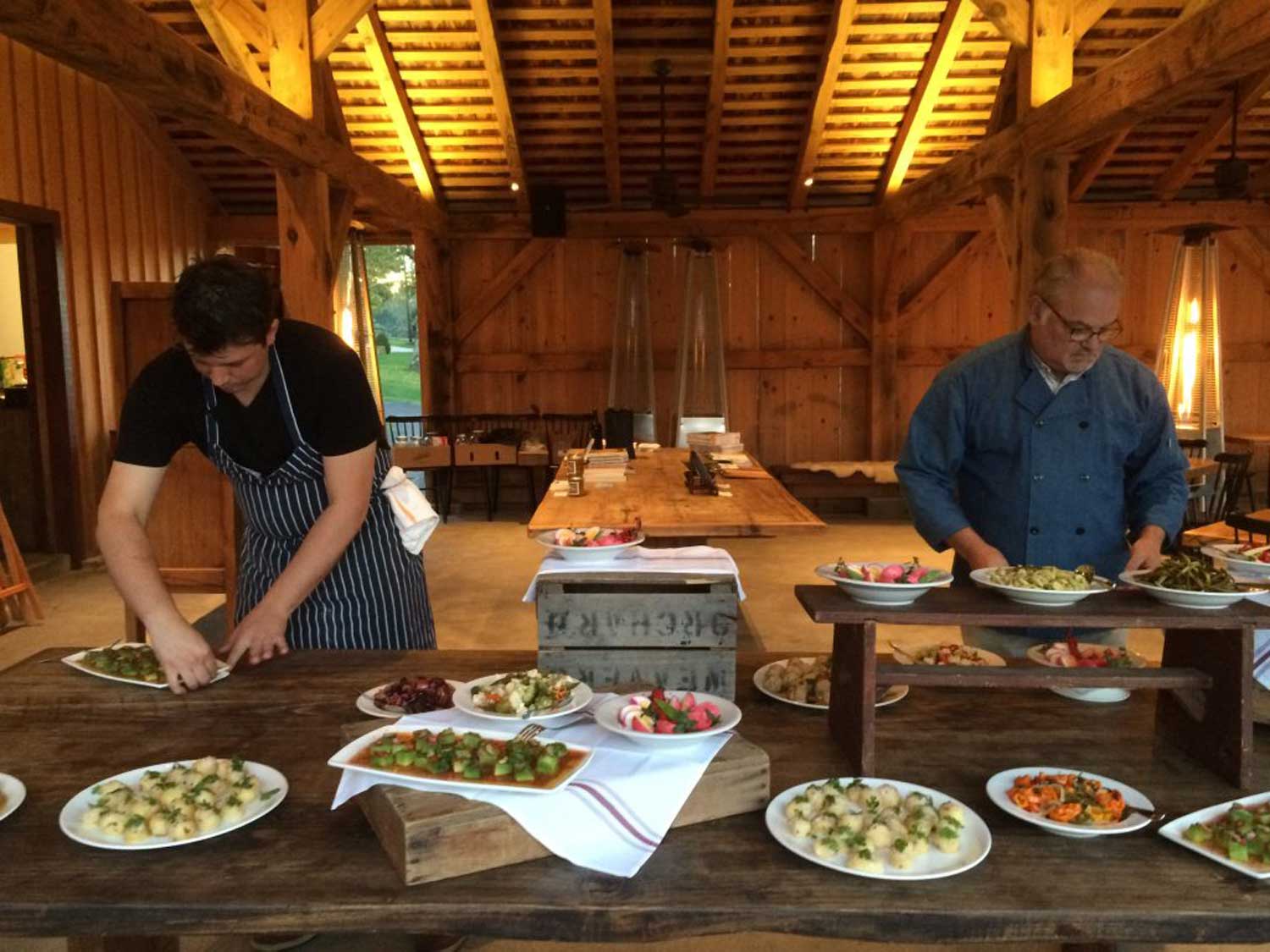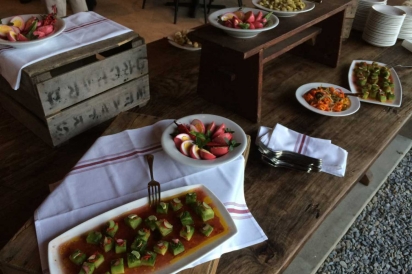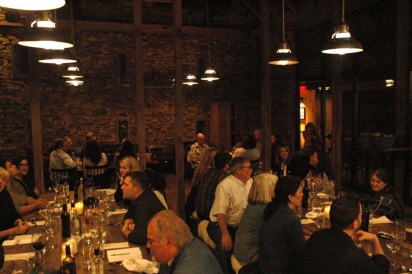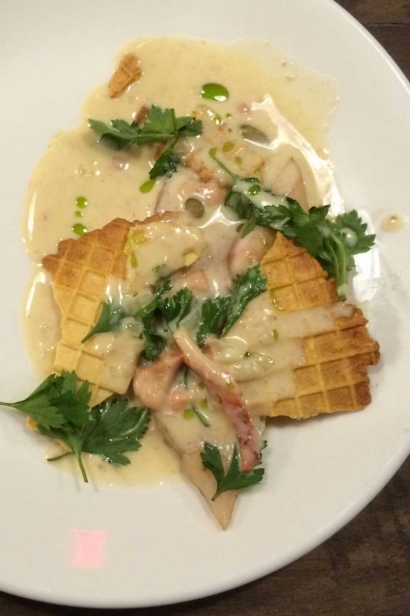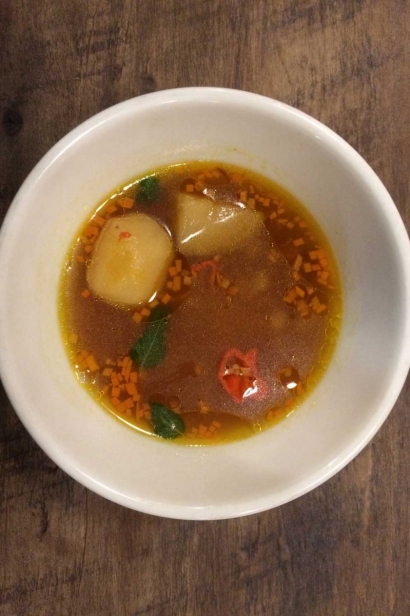Regional Culinary Traditions Revived
Our region’s top growers, chefs, and food historians collaborate to benefit Pennsylvania foodways research
If you flipped through cookbooks and restaurant menus from early 20th-century Pennsylvania, you’d find the dishes of a pre-industrialized, pre-globalized food era, evidence of a time when cooks used mostly indigenous ingredients and scant, select imports.
Look beyond scrapple, and you might come across recipes for Pepper Pot Soup, made with tripe, potatoes and chilies by way of early Caribbean trade routes. You’d learn that Chicken and Waffles evolved from the Catfish and Waffles dinners held at Inns and Hotels along the Schuylkill River. You’d debunk the origin story of chow-chow, the sweet and sour pickled vegetable relish thought to be a mainstay on the Pennsylvania Amish table.
The Keystone Center for the Study of Regional Food and Food Tourism, founded by food historian and ethnographer William Woys Weaver, researches and documents dishes like these to understand the food culture of our region.
“We’re here to promote the traditional foods and food plants of Pennsylvania,” Dr. Weaver says. The Center’s work aims to push forward ways of eating that support our local growers and producers; our region’s culinary history can provide an intriguing guide.
A group of celebrated Philly and Baltimore chefs who’s names you might recognize from Le Bec Fin, Fitler Dining Room, Aussie and the Fox, and Woodbury Kitchen, livened up a few traditional dishes last Tuesday. They served a five-course meal to about 40 guests at Wyebrook Farm in Honey Brook, PA – who donated their kitchen and dining space – to raise money for the Keystone Center.
Palmer Marinelli, formerly a cook at Pub and Kitchen and now a member of the Keystone Center’s board, put together the menu based on the Center’s research and Dr. Weaver’s books (As American as Shoofly Pie and Country Scrapple are two of more than a dozen). He worked with ingredients donated by local growers and producers like Green Meadow Farms, Birch Run Hills Farm, and Trickling Springs Creamery.
The seven chefs – who donated their time developing recipes, as well as cooking and serving at the event – each took the lead on a dish.
An hour before guests arrived, Brent Golding, chef at Aussie and the Fox in Lancaster, stood over a five-by-nine grid of pint containers, dropping pickled vegetables – green tomatoes, sour corn, watermelon radishes, saffron cauliflower, snips of green beans – into each container. He was assembling the chow-chow salad, a sweet and sour relish of pickled vegetables with roots in India, adapted in Pennsylvania Dutch kitchens.
Genevieve Bardwell sliced her Salt Rising Bread, which she makes at Rising Creek Bakery in Mt. Morris. It’s an old Appalachian tradition of wild microbe-leavened baking that she’s keeping alive at her bakery. Its dense crumb has a bit of a funky, almost cheesy smell heightened by toasting.
Behind Bardwell, Steve Eckerd dropped pineapple pumpkin dumplings into a steaming pot. They were subtly sweet, sautéed in sage butter – worth trailing out of the kitchen to the snack table.
Early arrivers circled around the spread: Weaver’s pickles – sage lima beans, curled garlic scapes, hot peppers with huacatay (and Andean herb related to marigold) and lime, sweet and sour grapes – soft pink beet pickled eggs, slabs of tomme and bleu, Bardwell’s toasts with a creamy herb spread, tomatoes and dill.
One trip around the table and my tiny plate was a lovely mess.
We were eventually shepherded up to the dining room where Golding’s chow-chow awaited. Rob Marzinsky’s Pepper Pot soup came next – bits of tripe blanched several times and braised in beef broth lurked under potatoes in the subtly spicy broth.
“That’s a good pepper pot!” Dr. Weaver exclaimed, before launching into the background of the dish, adapted from Jamaican Pepper Pot Soup into a Philadelphian street food. It was a hangover ‘cure,’ Weaver says, often served to drinkers from giant kettles outside taverns.
“This is what Keystone is all about,” Dr. Weaver says, “The cultural baggage that comes with the food.”
Each chef revealed the background and recipe development behind each dish after it had been served. Not surprisingly, Catfish and Waffles is a dish Spike Gjerde of Woodbury Kitchen says he never would have thought to cook. He seemed to be a bit surprised how good it turned out – the lightly smoked fish with a thin, snappy buttermilk waffle, softened by rich gravy. Fellow Woodbury chef Patrick “Opie” Crooks used Kugler’s old recipe to make the waffle, which he says turned out perfectly on the first try.
“As much as it can be fascinating to have a view into how life was and how food was in the past,” Gjerde says, “For us it can really be a practical users guide to a lot of [region-specific] ingredients.”
This is the work of the Keystone Center – to support Pennsylvania-grown and crafted products, as well as to continue researching and documenting traditional foodways, and drive statewide conversations about better procurement practices.
The money raised from the dinner will be used to revamp the center’s website, which is a step on the way to providing a cache of regional food research. The organization hopes to hold educational event and host food tours in the coming years.


